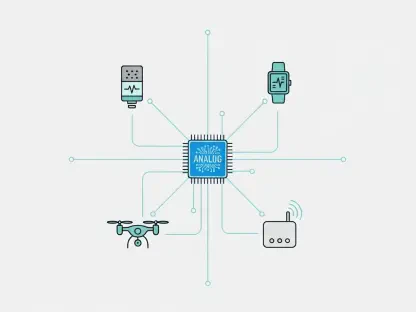Imagine a world where athletes can access critical performance data without ever breaking stride or taking their eyes off the road—an innovation that could redefine training for runners, cyclists, and triathletes. This is the promise of augmented reality (AR) in sports, and a new contender has emerged to bring this vision to life. Designed specifically for endurance athletes, these smart glasses integrate cutting-edge technology to project real-time metrics directly into the user’s field of vision. By eliminating the need to glance at a wristwatch or bike computer, this device offers a seamless way to track essentials like speed, power, and heart rate during intense workouts. The concept draws inspiration from heads-up displays (HUDs) used by fighter pilots, adapted now for the athletic arena. This review dives deep into how this product balances groundbreaking features with practical usability, exploring whether it truly delivers on its ambitious goals for performance-driven individuals.
Cutting-Edge Technology Meets Athletic Needs
The core appeal of these smart sports glasses lies in their ability to deliver performance data through an integrated HUD, powered by a micro-OLED projector. This technology projects monochrome metrics directly into the line of sight, ensuring athletes can stay focused on their surroundings while monitoring key stats like time, speed, and heart rate. Compatibility with popular wearable devices from brands such as Garmin, Apple, Suunto, and Android adds to the versatility, allowing seamless integration into existing gear ecosystems. Although the initial setup, especially with certain smartwatches, may require patience and multiple attempts, the connection proves reliable once established. Over time, the display becomes intuitive, blending into the user’s peripheral awareness without obstructing the broader view. This fusion of AR with athletic training marks a significant leap forward, offering a hands-free solution that could transform how athletes interact with data during high-stakes sessions.
Beyond the display, user interaction features aim to enhance the experience but reveal some limitations. Athletes can toggle between different data dashboards using hand gestures, a concept that sounds futuristic but often falters in execution. At times, the gestures register flawlessly, providing quick access to customized views; at other moments, the system fails to respond, leading to frustration during critical training moments. Additionally, while the companion app, ActiveLook, allows for data view customization, its interface lacks the polish and user-friendliness expected from a premium product. These inconsistencies highlight a gap between the innovative vision and practical application, suggesting that further refinement is necessary to perfect the interaction model. Despite these hiccups, the potential of this technology to redefine real-time performance tracking remains undeniable, especially for those willing to adapt to its learning curve.
Design and Comfort for Endurance Sports
When it comes to design, these AR glasses stand out for their thoughtful construction tailored to the rigors of endurance sports. Available in two sizes to accommodate different face shapes, they are remarkably lightweight compared to other smart eyewear on the market, reducing fatigue during long sessions. Adjustable nose pads further enhance the fit, ensuring stability even during intense movement. Built to withstand the elements, the glasses offer resistance to water and sweat, making them a reliable companion for outdoor training in varying conditions. The photochromic lens option, which adjusts tint based on ambient light, adds a layer of versatility while lending a sleek, futuristic aesthetic. These design choices reflect a deep understanding of athletes’ needs, prioritizing both functionality and comfort in a way that supports extended use without distraction.
However, not every aspect of the design is flawless, as certain practical challenges emerge with regular use. One notable issue is the placement of the on/off button on the nose bridge, which can be difficult to access, especially when wearing the glasses during a workout. This minor inconvenience can disrupt the flow of a session, requiring users to pause and adjust their grip to power the device on or off. Despite this, the overall build quality and attention to ergonomic detail remain impressive, catering effectively to the demands of serious athletes. The balance of durability and wearability positions this product as a strong contender in the sports tech space, though small refinements could elevate the user experience further. For those prioritizing gear that endures the grind of training while maintaining a comfortable fit, these glasses offer a compelling solution with room for minor tweaks.
Performance Metrics and Market Positioning
Battery life emerges as a standout feature, with the glasses providing up to 12 hours of continuous use on a single charge—more than enough for even the longest training sessions or races. Charging via USB-C is quick and convenient, minimizing downtime between uses. This endurance makes the product particularly appealing to triathletes and ultra-runners who require reliable performance over extended periods. Pricing reflects the premium nature of the technology, with the photochromic model retailing at $310 and the non-photochromic version at $266. While this cost may deter casual exercisers, it aligns with the expectations of dedicated athletes seeking cutting-edge tools to gain a competitive edge. The investment appears justified by the unique blend of AR functionality and practical design, positioning the glasses as a specialized piece of equipment for serious performers.
Feedback from industry sources reinforces the notion that this product is more than just a novelty. Experts acknowledge its value in delivering actionable data through a refined HUD, describing it as the lightest and most polished option in its category. However, there’s a shared sentiment that further development is needed to iron out inconsistencies, particularly in user interaction features. The consensus points to a device that pushes boundaries in wearable tech for sports, offering significant advantages for performance tracking while leaving space for improvement in usability. For athletes willing to embrace early-stage innovation, the glasses represent a worthwhile addition to their toolkit, though the price point underscores the need for a clear commitment to maximizing training outcomes. This balance of promise and polish defines the product’s current standing in a competitive market.
Reflecting on a Game-Changing Tool
Looking back, the journey of evaluating these smart sports glasses revealed a blend of groundbreaking innovation and areas ripe for enhancement. The HUD technology proved to be a transformative asset for real-time data access, while the design catered admirably to the physical demands of endurance sports. Challenges like inconsistent gesture controls and app usability stood out as hurdles that tempered the overall experience. Yet, the potential for this device to reshape athletic training was evident throughout the assessment. Moving forward, targeted updates to the software and interaction mechanisms could address these shortcomings, solidifying the product’s appeal. Athletes and tech enthusiasts alike should keep an eye on future iterations, as refinements in these areas might elevate the glasses to a must-have status. For now, this tool remains a promising step into the future of sports technology, offering dedicated users a unique edge worth exploring with an open mind.









